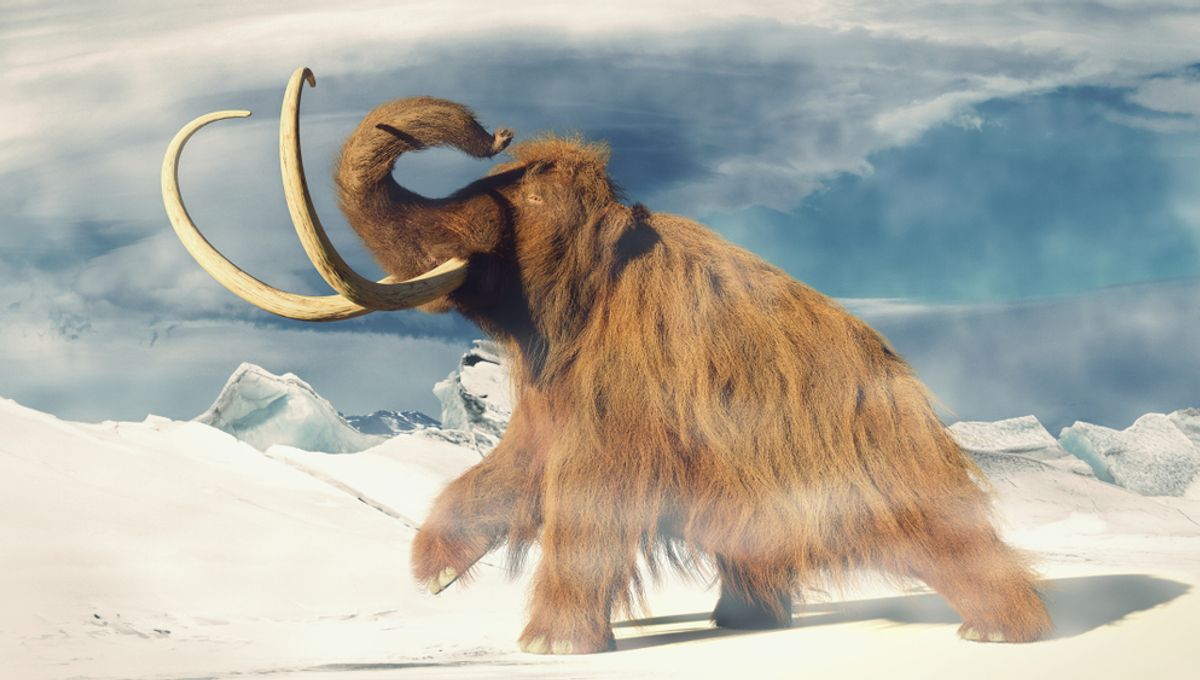
Few prehistoric animals are more iconic than the woolly mammoth: gigantic tusked beasts covered in shaggy hair, wandering the steppes of Eurasia and North America, occasionally doing battle with early humans or getting annoyed with the odd ground sloth. But like any species, their looks were the result of eons of evolution – and a new study has revealed exactly how the mammoth’s most famous features came to develop over hundreds of thousands of years in the Siberian steppe.
“We wanted to know what makes a mammoth a woolly mammoth,” David Díez-del-Molino, a paleogeneticist at the Center for Palaeogenetics in Stockholm and first author of the new study, said in a statement.
“Woolly mammoths have some very characteristic morphological features, like their thick fur and small ears, that you obviously expect based on what frozen specimens look like,” he commented. “But there are also many other adaptations like fat metabolism and cold perception that are not so evident because they’re at the molecular level.”
To investigate how the ancient behemoths evolved, the team compared the genomes of 23 Siberian woolly mammoths with those of 28 modern-day Asian and African elephants. Most of the mammoths were relatively modern specimens – in this context meaning they lived less than 100,000 years ago, rather than any definition of “modern” you may be more used to – but the star of the show was undoubtedly Chukochya, a mammoth hailing from about 700,000 years ago.
Older than almost any other known mammoth, “the Chukochya genome allowed us to identify a number of genes that evolved during the lifespan of the woolly mammoth as a species,” explained Love Dalén, a professor of evolutionary genomics at the Center for Palaeogenetics in Stockholm and senior author of the new paper. “This allows us to study evolution in real time, and we can say these specific mutations are unique to woolly mammoths, and they didn’t exist in its ancestors.”
So, what does make a mammoth a woolly mammoth? According to the study, it’s many of the same things that make a bear a polar bear, or a deer a reindeer: “We found some highly evolved genes related to fat metabolism and storage that are also found in other Arctic species,” Díez-del-Molino said. That means “there’s probably convergent evolution for these genes in cold-adapted mammals.”
The study had a few surprises in store regarding the traits which aren’t so important to defining the animals, he added – as the team discovered that some genes previously thought to be unique or special for the woolly mammoth were actually variable across different species. That means “they probably weren’t as important,” Díez-del-Molino explained.
Of course, in evolutionary terms, 700,000 years isn’t all that long – so it’s no surprise that some of the most defining traits such as their thick fur, fat metabolism, and cold-perception abilities were likely present from the very beginning of the woolly mammoths’ development. In fact, around 92 percent of the mutations in the more modern mammoths’ genomes were shared by the ancient Chukochya genome.
But just because these traits were there, doesn’t mean they were exactly right, Dalén explained.
“The very earliest woolly mammoths weren’t fully evolved,” he said. “They possibly had larger ears, and their wool was different – perhaps less insulating and fluffy compared to later woolly mammoths.”
While the results are undoubtedly exciting, the researchers are aware that we don’t have the whole story yet. That’s partly because all the mammoths involved in the study were collected in Siberia – an important part of the species’ habitat, but far from the only place they roamed – and the team hopes to branch out to include North American specimens in the future.
It’s an extension that could make a big difference in our knowledge of mammoth evolution. “We showed a couple of years ago that there was gene flow between woolly mammoths and the ancestors of Colombian mammoths, so that’s something that we will need to account for,” Dalén explained. “North American woolly mammoths might have been carrying non-woolly mammoth genes as well.”
The paper is published in the journal Current Biology.
Source Link: Woolly Mammoths Got Fluffier With Smaller Ears As Time Went On